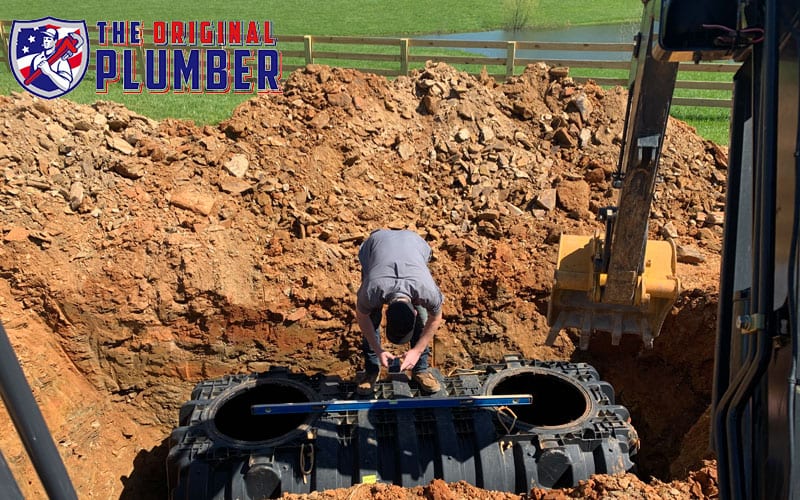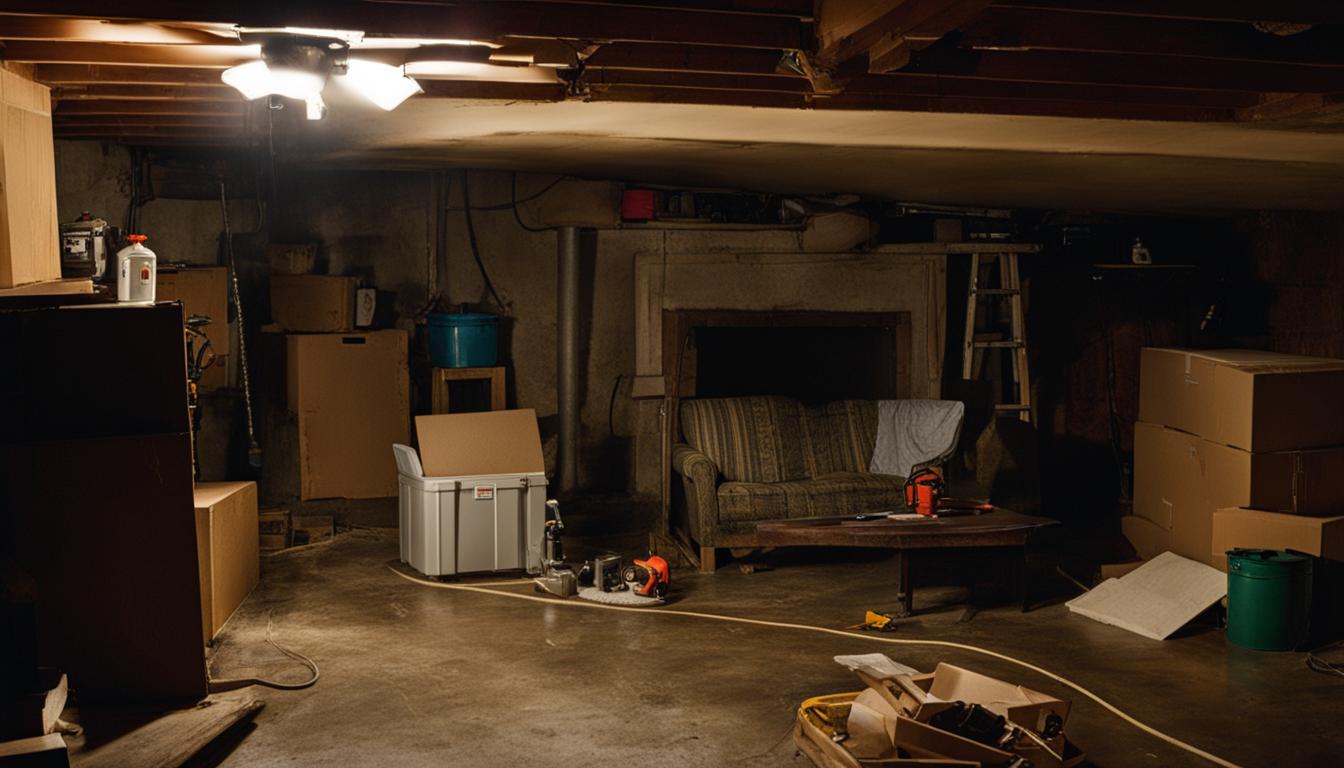A typical size for a septic tank is 1,000 to 1,500 gallons. A septic tank is an underground tank used for the treatment of household wastewater.
The size of the septic tank depends on factors such as the number of bedrooms in the house, the daily water consumption, and the amount of wastewater produced. It is crucial to choose an appropriately sized septic tank to ensure efficient wastewater treatment and avoid overflows or backups.
By considering the factors mentioned above, you can determine the right size of septic tank for your specific needs.
The Importance Of Choosing The Right Size Septic Tank
The Importance of Choosing the Right Size Septic Tank
Choosing the right size septic tank is crucial for the efficient and effective management of waste in a property. A septic tank that is too small can quickly fill up, leading to frequent pump-outs and potential overflow issues. On the other hand, a septic tank that is too large for the property’s needs can result in underutilization and unnecessary costs.
When determining the appropriate septic tank size, several factors should be taken into consideration. First, the number of occupants in the property will play a significant role. The more people using the septic system, the larger the tank needs to be. Additionally, the daily water usage should be considered to ensure the tank can handle the expected wastewater volume.
| Factors to Consider when Determining Septic Tank Size |
|---|
| The number of occupants in the property |
| The daily water usage |
| The number of bedrooms in the property |
| The overall property size |
Furthermore, the number of bedrooms in the property and the overall property size can also impact the required septic tank size. A larger property with more bedrooms will typically generate more wastewater and will, therefore, require a larger tank.
It is essential to consult with a septic system professional to accurately determine the appropriate septic tank size for your specific needs. They will consider these factors and provide recommendations that ensure an optimal and efficient septic system for your property.
Understanding Your Household’s Waste Generation
The size of your septic tank greatly depends on the amount of wastewater your household generates daily. One way to estimate this is by considering your average daily water usage. To determine this, you can start by calculating your family’s water consumption. Keep track of how many gallons of water you use for various activities, such as showering, washing dishes, and doing laundry.
Next, you can estimate the average daily wastewater generation. Typically, around 60-70% of your water usage ends up as wastewater. So, multiply your daily water usage by this percentage to get an estimate of your daily wastewater generation.
For example: If your household uses an average of 200 gallons of water per day, your estimated daily wastewater generation would be around 120-140 gallons.
Once you have an idea of your daily wastewater generation, you can determine the appropriate septic tank size. It’s crucial to choose a tank that can handle your household’s waste volume to prevent issues like backups and system failures.
Determining The Minimum Required Septic Tank Size
When determining the minimum required septic tank size, there are several guidelines to follow. These guidelines take into account various factors that can influence the size of the tank.
Firstly, the number of bedrooms in the house is often used as a basis for determining the tank size. This is because the number of bedrooms is generally an indicator of the number of people who will be using the septic system. A larger number of bedrooms typically means more people and, therefore, a larger tank size is required.
Another factor to consider is the soil type. Different soil types have varying drainage capabilities, with some soils draining faster than others. If the soil on the property has poor drainage, a larger septic tank may be necessary to accommodate the slower drainage rate.
Additionally, the water usage habits of the household should be taken into account. Houses with excessive water usage, such as those with multiple bathrooms or large families, may require a larger tank to handle the increased volume of wastewater.
Lastly, local regulations and codes may also dictate the minimum required septic tank size. These regulations are in place to ensure the proper functioning of the septic system and to protect the environment.
Factors To Consider For Optimal Septic Tank Sizing
When determining the appropriate size for a septic tank, several factors should be taken into consideration. One important factor is the number of bedrooms and bathrooms in a home. This is because the more bedrooms and bathrooms there are, the more waste will be generated and the larger the septic tank will need to be to accommodate it.
Another consideration is the family size and daily activities. A larger family, or a family that uses a significant amount of water and has high water usage activities such as frequent laundry or long showers, will require a larger septic tank to handle the increased waste and wastewater flow.
Seasonal considerations should also be kept in mind. If the property experiences seasonal variations in water usage, such as during holiday gatherings or vacation periods, a septic tank that can handle the increased flow during those times may be necessary.
The Consequences Of An Oversized Septic Tank
An oversized septic tank can lead to various consequences, including improper waste treatment and potential environmental hazards. It is crucial to determine the appropriate size of the septic tank to ensure efficient functionality and avoid these repercussions.
An oversized septic tank can have detrimental effects on waste treatment efficiency and pose maintenance challenges.
Waste Treatment Efficiency: An oversized septic tank can lead to decreased waste treatment efficiency. When the tank is too large for the household’s needs, the waste may not accumulate properly, resulting in incomplete breakdown and insufficient time for beneficial bacteria to treat the waste effectively. This can lead to the release of untreated or partially treated waste into the drain field, polluting the groundwater and surrounding environment.
Maintenance Challenges: Oversized septic tanks may require more frequent maintenance and costly pumping. Inadequate waste accumulation can prevent the natural separation of solids and liquids, resulting in the accumulation of sludge at the bottom. Regular pumpings may be necessary to prevent solids from entering the drain field and causing clogs or backups. Additionally, the excessive volume of wastewater can overload the drain field, causing it to become saturated and ineffective at filtering and absorbing the wastewater.
The Dangers Of An Undersized Septic Tank
|
An undersized septic tank can pose potential health risks and lead to system failure, resulting in costly repairs. Septic tanks are designed to hold and treat wastewater from a property. When a septic tank is undersized, it may not have enough capacity to effectively handle the volume of wastewater produced by the property. This can lead to overflow and leakage, which can contaminate surrounding soil, water sources, and even nearby wells. One potential health risk of an undersized septic tank is the exposure to harmful bacteria, pathogens, and pollutants. These contaminants can seep into the soil and groundwater, potentially causing illnesses and diseases for those living in the area. In addition, an overloaded septic tank can release unpleasant odors, which can negatively impact the quality of life for residents. Furthermore, system failure due to an undersized septic tank can be both inconvenient and costly. A septic tank that is not properly sized may fill up too quickly, leading to frequent pumping and maintenance. This can significantly increase the expenses associated with septic system upkeep. |
Common Mistakes To Avoid In Septic Tank Sizing
Septic tank sizing is a crucial aspect of any septic system installation, as getting it wrong can lead to costly problems down the line. One common mistake to avoid is relying solely on generalized charts and tables. While these resources can provide a starting point, they often overlook important factors such as the number of bedrooms in a house, water usage, and soil conditions. It’s essential to consider these specific factors and consult with a professional to ensure accurate sizing.
Another mistake to avoid is ignoring future expansion. As households grow and change, so do their septic needs. Failing to account for future expansion can result in a tank that is too small and requires frequent pumping or even failure of the system. It’s important to plan for potential future additions or changes to the property and factor these into the septic tank sizing calculations.
Understanding The Role Of A Professional Septic System Designer
Understanding the role of a professional septic system designer is vital for ensuring the proper functioning of your septic system. Consulting a professional is of utmost importance as they have the expertise and knowledge to design a septic system that meets your specific needs. A professional designer will assess factors such as the size of your property, the number of household members, and the soil composition to determine the appropriate size of the septic tank.
Having a properly sized septic tank offers numerous benefits. Firstly, it ensures efficient waste management and prevents issues like backups and overflows. Secondly, it promotes the longevity of your septic system by reducing the risk of damage caused by overloaded tanks. Proper sizing also helps in maintaining the balance of bacteria in the tank, aiding in the breakdown of solids.
In conclusion, consulting a professional septic system designer is crucial for understanding the requirements of your property and ensuring the installation of a perfectly sized septic tank for efficient waste management.

Credit: theoriginalplumber.com
Frequently Asked Questions On What Size Septic Tank
How Do You Figure Out What Size Septic Tank I Need?
To determine the size of a septic tank you need, consider factors like the number of bedrooms in your house and the daily water usage. Calculate 75 gallons per person per day and add 50 gallons for each bedroom. Remember to consult local regulations and consider future growth.
How Many Bedrooms Does A 750 Gallon Septic Tank Support?
A 750 gallon septic tank typically supports households with 3 to 4 bedrooms.
Is A 500 Gallon Septic Tank Big Enough?
Yes, a 500-gallon septic tank can be suitable for smaller households with less wastewater usage. However, it is important to consider the number of occupants and their water consumption habits to ensure the tank meets their needs. Regular maintenance and proper usage are crucial for optimal performance.
Is A 600 Gallon Septic Tank Big Enough?
A 600-gallon septic tank is suitable for small households with few occupants. It’s important to consider factors like water usage and waste volume. Consulting a professional will ensure that the tank size meets your needs for proper waste management.
Conclusion
To determine the appropriate size for your septic tank, it is crucial to consider factors such as household size, water usage, and local regulations. A well-designed septic system that matches your specific needs is essential for maintaining a healthy and functional wastewater treatment process.
By understanding the importance of proper sizing, you can ensure efficient operation, prevent costly repairs, and protect both the environment and your property. Remember, consulting with a professional is key in making an informed decision about the right septic tank size for your property.





